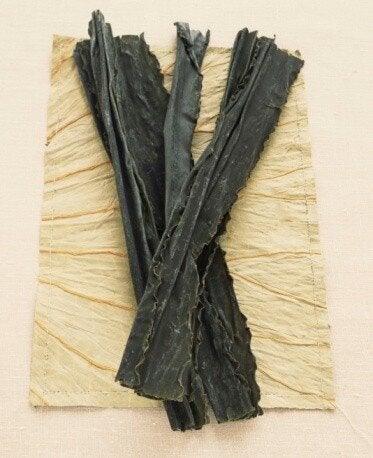
The nuclear reactor meltdown in Japan has provoked fears about radioactivity and the implications to your health. Many anxious patients and readers called in last week to inquire about the health threats of radiation. This article is an attempt to address any radiation concerns you may have, relating both to the reactor meltdown and everyday exposure in normal life. Read on to discover natural ways to protect yourself from exposure and reduce radiation load on your body.
First, you should know that radioactivity from Japan has little impact on U.S. citizens. Take a look at the numbers. To date, the news reports that the four reactors in partial meltdown spewed radiation as high as 500 meters or 1,640 feet, according to John Beddington, U.K.'s Chief science officer. In comparison, the Chernobyl blast sent radioactive particles 30,000 feet high for months. Although it is true that minute radiation was detected in Sacramento at the end of last week, it was so minor -- one-millionth of what people get from natural background radiation -- that health officials assured the public that it posed no threat to residents on the west coast of the United States.
Wherever you live, avoid foods grown on or raised near the fallout zone. Dairy and spinach produced within the radioactive zone in Japan had vastly elevated radioactivity, which the Japanese government discouraged its people from consuming. Radioactivity was also found in Pacific waters, off the northern coast near the nuclear plant. Over time, this radioactivity should dissipate as the reactor is cooled and stops spewing particle ash and dust. For now it is wise to avoid seafood caught in Japanese waters. Other than avoiding potentially contaminated food, there should be no concern for American residents, so no need to panic or go out and hoard potassium iodide pills, let alone take them!
Radiation Risks 101
There is much misinformation about radiation that I would like to attempt to clarify here.
What is Radiation? To understand the risk of radiation to your health, it helps to know what it is. There are two types of radiation, and the first type, electromagnetic (EM) waves, range from low energy to high energy. Low energy EM includes electrical, infrared, visible light, and ultraviolet (UV). These, with the exception of UV, are relatively harmless and can even be therapeutic, such as the far infrared wave. At the high energy end of EM are the diagnostic and therapeutic x-rays like gamma rays. As these are more powerful, exposure must be monitored and limited.
Particle radiation, the second type, includes electron, proton, and neutron beams produced from splitting unstable atoms from plutonium and uranium -- as in a nuclear reactor or bomb. High exposure to these types of radiation can cause genetic defects, cancer, and death. For instance, a 2009 New York Academy of Sciences report on the death toll in the European fallout zone of the Chernobyl accident indicated that from 1986 to 2005 one million people died from genetic damage caused by the radioactive fallout. Additionally, numerous people suffered from thyroid cancer and leukemia.
We live with radiation all around us. The sun and stars, rocks, earth, and even our own bones emit natural background radiation. Radiation also comes from television, smoke detectors, and microwave ovens. It is estimated that the annual average of acceptable exposure from the above natural and equipment radiation is around one millisieverts or mSv. If this data doesn't mean much to you, let's put it in context. If the average acceptable exposure for each person is one mSv per year -- and for illustrative purposes, we'll say this is equal to one truckload -- then a simple chest x-ray is approximately 0.03 truckload. Said another way, it would take around 33 chest x-rays for a person to reach their yearly radiation allowance.
Medical diagnostic tests expose you to radiation, but the amount varies. As just mentioned, a chest x-ray leaves you open to a small amount of radiation. An upper GI x-ray is equal to about three truckloads, and a CT scan is around four truckloads. This number may sound alarming, but if you had a condition that required diagnostic imaging, it would be foolish to avoid it and delay treatments that could potentially save your life.
Natural ways to reduce radiation load in your body
These are some simple ways for everyone to reduce exposure and radiation load:
• Introduce more chlorophyll-rich foods into your diet, such as seaweed, kelp, blue-green algae, spirulina, and chlorella. These plants contain rich minerals, including iodine, that bind up the receptors site in your thyroid so that any radioactive iodine that you end up being exposed to will be unable to harm your thyroid. These foods also contain potent antioxidants, like selenium, that prevent destructive free radical activity and cancerous growth, as well as chelating agents that bind to toxins and eliminate them from your body.
• Eat antioxidant-rich foods of every color, especially cherries, blueberries, pomegranates, yams, and sweet potatoes. The variety of antioxidants found in these foods help your body to mop up free radicals and toxins.
• Drink six to eight 8-ounce glasses of filtered water every day to flush and hydrate your system.
• Consider taking vitamin C, E, and D to assist antioxidant actions within your body. Also, alpha lipoic acid is a nutrient that protects cells from radiation damage.
• Herbs like dandelion, peppermint, and chrysanthemum help the body detoxify.
• Undergoing a medically supervised detox program like the Tao of Wellness Detox Retreat can support your body's cleansing function.
I hope this article helps to clarify radiation's impact on your health and that you will use the information to live long, live strong and live happy.
You can find many more environmental tips to protect your longevity in Secrets of Longevity: Hundreds of Ways to Live to Be 100, which is now available on Kindle. If you are interested in a lifestyle program designed to transform your health and lengthen your years, check out my new book Secrets of Longevity 8-Week Program.
